#sugar exporting countries
Explore tagged Tumblr posts
Text
The Sweet Success of Brazil Sugar Export Industry

In terms of exporting sugar, Brazil leads agricultural manufacturing worldwide, without question. Usually constructed from sugarcane, sugar is a staple of human food and is vital for international meal delivery structures. Together with different major producers, inclusive of China, Thailand, India, and the US, Brazil accounts for greater than 75% of world sugar manufacturing. Brazil might still be the pinnacle sugar manufacturer and exporter inside the world by 2022. This article looks at the motives for Brazil sugar export industry, gift tendencies, and destiny possibilities.
What Brazil's Sugar Exports Mean
One important factor in the economy of Brazil is the Brazil sugar export market. Brazil's rich terrain and temperate temperature make it a perfect place to grow sugarcane, which sustains millions of people's lives and generates significant income. Being the largest sugar exporter in the world, Brazil is essential to the worldwide supply chain.
Current Developments in the Sugar Industry of Brazil Rising Export Volumes
Brazil has always exported a lot of sugar, frequently more than 30 million tonnes a year. The constant output highlights Brazil's leading position in the world market. With rising investments in production capacity, the sugar export market in Brazil exhibits flexibility and resilience.
Export Destinations Diversification
Among Brazil's export targets are China, India, and the European Union. By diversifying, one lowers the risk of depending too much on one market. Sugar exporters in Brazil are aggressively looking for fresh chances to guarantee steady expansion and market presence.
World Sugar Demand is Rising in Developing Nations
Rising sugar consumption in developing countries is being driven by urbanisation and industrialization. As their food and beverage industries grow, nations like China and India are seeing notable increases in demand. Countries like Brazil, which export directly, gain from this growing demand.
News on Health and Sugar Substitutes
A slow move towards alternatives is being caused by the increasing attention given to the health consequences of sugar, despite the increasing calls. This trend has affected sugar exports from Brazil and future calls for styles.
Technological Progress
Technology Advancements in Agriculture
Brazilian farmers are adopting cutting-edge techniques to increase outputs and cut expenses, such as genetically modified crops and precision farming. Higher volumes of sugar exported from Brazil are also greatly aided by better irrigation methods.
Industry Automation
Processing plant automation raises production and efficiency. Brazil remains the world's top sugar exporter because of technologies like automated harvesting, which guarantees high-quality production at lower costs.
Agriculture Sustainability
Organic Agriculture Methods
The awareness of sustainability is rising, and Brazil leads the way in environmentally friendly farming methods. Major initiatives are to improve soil fitness and use fewer pesticides. These procedures help to sustain the high standards that Brazilian sugar exporters had anticipated.
Creation of Bioenergy
With two uses in the production of sugar and ethanol, sugarcane is a valuable crop in sustainable power solutions. Similarly increasing the significance of Brazilian sugar exports is ethanol produced from sugarcane, a major renewable biofuel.
Issues in the Market
Effects of Climate Change
The exchange of climate is a huge task because different weather patterns have an impact on sugarcane harvests. The whole supply chain is impacted by these interruptions, as is the dependability of Brazil's sugar exports.
Economic ups and downs
Sugar prices are subject to changes in the world economy. Brazilian sugar exporters may find themselves in difficult circumstances as a result of changes in exchange rates and economic downturns in importing countries.
Future Trend Predictions Sustaining Market Growth The food industry is growing, and the world population is rising; hence, sugar demand is predicted to rise. Brazil is positioned to continue to dominate among sugar exporting countries.
Trend Towards Organic Sugar Demand for less processed and organic sugar is being driven by health-conscious consumers. Brazil might have to change its production techniques to meet this market niche and guarantee steady sugar exports from the country.
Effect of Trade Agreements Lowering Trade Barriers
Brazil is aggressively seeking trade deals to lower tariffs and improve market access, therefore fortifying its competitive position as the world's largest sugar exporter.
Regional Development
New trade agreements can increase Brazil's export potential and solidify its position among the world's top sugar exporters by opening up hitherto unexplored markets, especially in Asia and Africa.
Economic Aspects of Revenue Generation in Brazil
Exports of sugar bring in a lot of money and help several economic sectors, including logistics and agriculture. The strong Brazilian sugar export sector guarantees steady economic expansion.
Career Options
Millions of people have jobs thanks to the sugar business, which advances the socioeconomic growth of the nation. A vital part of maintaining employment and economic stability in Brazil is played by sugar exporters.
Brazil Against Other Sugar Exporters Competitive Edge
Large-scale farms, Brazil's climate, and sophisticated technology set it apart from other suppliers including India and Thailand. This benefit enables Brazil to keep the rank of the biggest exporter of sugar worldwide.
Economic Share
Keeping a sizable market share, Brazil keeps exceeding rivals in terms of volume and quality of sugar exported. This supremacy helps to explain its ranking among the top sugar exporting nations.
Consumer Preferences and Changes in the Market Health-conscious consumers
Growing health concerns drive consumers towards natural, less processed sugars. Brazil is adjusting to changing tastes by pushing organic sugar products, therefore guaranteeing ongoing demand for Brazilian sugar exports.
Specialty Sugar Demand
Speciality sugars, including raw and unprocessed forms, are in increasing demand. By expanding its product line to fit these specific markets, Brazil is confirming its leadership in sugar exports.
The function of Government Policies Promoting Exports
Brazil's sugar sector is sustained by government policies, subsidies, and infrastructural expenditures, which help it remain the world's top sugar exporter.
Standards & Regulations
Strict rules guarantee that Brazilian sugar satisfies international standards, which increases its attractiveness to purchasers worldwide and guarantees a steady supply from Brazilian sugar exporters.
Conclusion
Within the international sugar trade, Brazil's sugar export market is quite important. Brazil is well-positioned to keep leading the way because of its cutting-edge technology, environmentally friendly practices, and strategic trade deals. The outlooks and tendencies for this important sector will change along with the world. You can, however, also use a variety of websites, such as Eximpedia and Seair Exim Solutions, to obtain import and export data reports, including extensive analysis.
#global trade data#export#import#international trade#trade data#trade market#import data#global market#import export data#brazil#Brazil sugar export#sugar exporters in brazil#sugar exports from brazil#sugar exporting countries#biggest exporter of sugar
0 notes
Text
Brazil dominates global sugar production and exportation, vital for worldwide food supply chains. Alongside major producers like China, Thailand, India, and the United States, it contributes over 75% of the world's sugar. This blog explores Brazil's sugar industry motivations, current trends, and future prospects.
Visit Blog: https://medium.com/@seair.exim/brazil-sugar-exports-trends-shaping-the-future-market-d5eed3970182
#export#import#trade data#export data#international trade#global trade data#trade market#import export data#Brazil sugar export#sugar exporters in brazil#sugar exports from brazil#sugar exporting countries#biggest exporter of sugar#brazil sugar export data#brazil#sugar
0 notes
Text
Explore the global sugar trade, including key trends, top exporters like Brazil and India, product categories, and growth opportunities. Dive into sugar export data, policies, and the evolving dynamics of this essential market. Perfect for traders and policymakers!
#sugar export data#sugar hs code#World largest exporter of sugar#top sugar exporter#top sugar exporting countries#list of sugar exporters#top 10 sugar exporters#largest exporter of sugar
0 notes
Text
There is a direct connection between the expansion of [...] new [coffee] consumer culture in Europe [...] and the expansion of plantation slavery in the Caribbean. [...] [S]lave-based coffee was more important to the Dutch [Netherlands] economy than previously [acknowledged] [...]. [T]he phenomenal growth of [plantation slavery in] Saint Domingue [the French colony of Haiti] was partly made possible by the export market along the Rhine that was opened up by the Dutch Republic. [...] [E]arly in the eighteenth century, the Dutch and French began production in their respective West Indian colonies [...]. [C]offee was still a very exclusive product in Europe. [...] From the late 1720s, [...] in the Netherlands [...] coffee was especially widespread [...]. From the late 1750s the volume of Atlantic coffee production [...] increased significantly. It was at that time that the habit of drinking coffee spread further inland [...] [especially] in Rhineland Germany [...] [and] inland Germany [due to Dutch shipments via the river].
Although its consumption may not have been as widespread as the tea-sugar complex in Britain, there certainly was a similar ‘coffee-sugar complex’ in continental Europe [...] spread during the eighteenth century [...]. The total amount of coffee imported to Europe (excluding the Italian [...] trade) was less than 4 million pounds per year during 1723–7 and rose to almost 100 million pounds per year around 1788 [...]. In 1790 [...] almost half of the value of [Dutch] exports over the Rhine [to Germany] was coffee. [...]
---
The rising prices in the 1760s encouraged more investment in coffee in Dutch Guiana and the start of new plantations in Saint Domingue [Haiti]. Production in Saint Domingue skyrocketed and surpassed all the others, so that this colony provided 60% of all the coffee in the world by 1789. [Necessitating more slave labor. The Haitian revolution would manifest about a decade later.] [...]
In French historiography, the ‘Dutch problems’ are considered to be the slave revolts (the Boni-maroon wars) [at Dutch plantations]. [...] France made use of the Dutch ‘troubles’ to expand its market share and coffee production in Saint Domingue [Haiti], which accelerated at an exponential rate. [...]
---
[T]he Dutch Guianas [were] producing over a third of the coffee consumed in Europe [...] [by] 1767. [...] The Dutch flooded the Rhine region with coffee and sugar, creating a lasting demand for both commodities, as the two are typically consumed together. [...] [T]he history of the slave-based coffee production in Surinam and Saint Domingue [Haiti] was pivotal in starting the mass consumption of coffee in Europe. [...] Slave-based coffee production was also crucial [...] in Brazil during the 'second slavery', where slavery existed on an enormous scale and was reshaped in the world's biggest coffee producing country [later] during the nineteenth century. [...] The Dutch merchant-bankers organised coffee investment, enslavement, and planting and selling; [all] while not leaving the town of Amsterdam [...].
[This market] expansion ends in crisis [...] - a crisis caused by uprisings and revolutions, most notably, the Haitian one. Yet Germans still liked coffee. And the Dutch colonial merchant-banker[s] [...] learned something about [...] production, and perhaps also something about the role of the state in labour control: as soon as they could, they sent Johannes van der Bosch [Dutch governor-general of the East Indies] to Surinam and Java in order to solve the labour issues and expand the colonial production of coffee [by imposing in Java the notoriously brutal cultuurstelsel "enforced planting" regime, followed later by the "Coolie Ordinance" laws allowing plantation owners to discipline "disobedient" workers, with millions of workers on Java plantations, lasting into the twentieth century].
---
Text above by: Tamira Combrink. "Slave-based coffee in the eighteenth-century and the role of the Dutch in global commodity chains". Slavery & Abolition Volume 42, Issue 1, pages 15-42. Published online 28 February 2021. [Bold emphasis and some paragraph breaks/contractions added by me. All of that italicized text within brackets was added by me for clarity and context; apologies to Combrink. Presented here for commentary, teaching, criticism.]
#abolition#ecology#caribbean#tidalectics#intimacies of four continents#ecologies#archipelagic thinking#indigenous#multispecies#european coffee#slavery hinterlands
127 notes
·
View notes
Text
Brazil’s Farmers Are Plowing Over an Ancient Amazon Civilization
An underfunded agency is up against the agriculture industry’s unstoppable expansion — and humanity’s heritage hangs in the balance.

In the badlands of the southwestern Amazon, Antonia Barbosa is fighting to protect ancient archaeological finds from Brazil’s unstoppable $523 billion agribusiness industry.
There, farmers view the land as a cash cow and the area’s historic geometric earth carvings, known as geoglyphs, are in the way. Already, at least nine of the most emblematic ancient sites — some of which span as many as 1,260 feet wide (385 meters) and 16 feet deep — have been plowed over in the past few years.
This is casually erasing evidence of a civilization that took off around the time of Christ and flourished for about 1,000 years, about as long as ancient Greece. And as farmers move deeper into the Amazon to meet global demand for soy, corn and sugar, geoglyphs are being destroyed just as fast as they’re being discovered.
“In our own backyard, we have a heritage that is as giant and as important as the pyramids in Egypt,” said Barbosa, the sole archaeologist that Brazil’s Iphan institute of cultural heritage has in the state of Acre to protect the sites. “They’ve lasted for more than 2,000 years and we’re going to destroy them in less than a generation.”
It’s an uphill battle for Barbosa. Farmers and ranchers are Brazil’s most powerful political and economic force, responsible for 24% of its gross domestic product and helping secure the country’s place as one of the world’s top two crop exporters. Acre is a part of that frontier, with soy production tripling in two years to an estimated 60,600 tons and farmland growing to 43,000 acres. That leaves little Barbosa or Iphan can do to protect the sites besides charge fines. But that’s only a drop in the bucket, particularly for big industrial farms.
“A landowner destroys an archaeological site because he thinks it will be more profitable to destroy, pay the fine and then use the land,” said Barbosa.
Continue reading.
#brazil#politics#environmental justice#indigenous rights#history#archaeology#brazilian politics#amazon rainforest#image description in alt#mod nise da silveira
40 notes
·
View notes
Text
A Naruto Headcanon - The Culinary History of the Ninja World.
i'm back and not so bare with me. this headcanons is related to a story telling how chouji and karui's marriage went down. ill post it eventually.
EACH COUNTRY’S CULINARY HISTORY
Konohagakure (Country of Fire) Konohagakure aka the land of the free. Many things make up the uniqueness of the cuisine of the country of fire. First, they are the king of importation, so their diet is really diverse and touched all sectors evenly. They grow all kind of vegetables to meet the need of its residents. While there are not has much native plants from the area in their current diet contrary to other villages like Suna and Kiri.
Konoha being built on a vast forest, their main fruit consumption comes from small fruit trees and fruit trees like apples, pears, and pomegranate. Anything that grows on a tree is often easily available since it takes its roots in Konoha’s founder Hashirama Senju.
The country are the main producer and consumer of eggs and meat especially pork (which they export all over the ninja world) this where you get the whole BBQ concept and omelets. Another downfall of the cuisine from Konoha is the heavy presence of processed goods in everyday cooking preparation. The current culture is far more removed from its traditional cooking methods. Referred to as the Senju Diet is almost getting lost and seen has a flower from the past. Many (often older individuals) resist the hard change that came trough time and tries to uphold the consumption of the way ninjas ate in the past.
Lotus Root is a staple of the Senju Diet
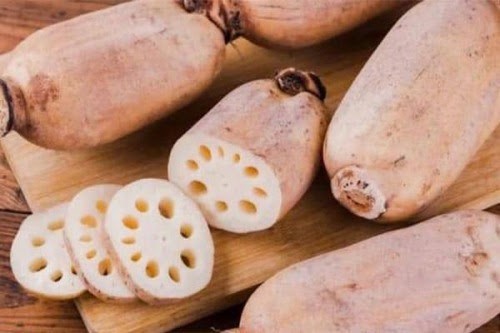
Even Naruto can testify to this and noticed how it hard for him maintain the same diet as when he was a child (aside eating ramen), the way fast foods chains have almost came out of nowhere and took over the market deeply concerns him (especially how its taking hold of this younger generation). The deliberate effort towards modernization and proving the country is the first in everything, can reach everything, can eat everything, can win against anyone basically walking like they are the goat of the ninja world has affected negatively old traditions in subtle ways and in other more obvious ways. Like how the Konoha can keep escape the threat of famine by stealing other nations resources.
At the same time, the combination of different culinary practice gave birth to various more dishes with various diverse ingredients and interesting like Takoyaki, okonomiyaki & dango
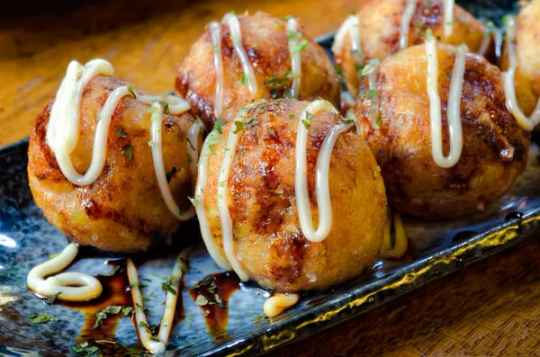
Like mentioned before, industrialization gave birth to many processed who are a staple in those dishes. products who are often only found in the country of fire like fish cakes & narutomaki. The land of fire is the soup & noodles master, it’s like their national food for being convenient and versatile with they make the infamous ramen but other dishes like stir-frys Yes, it a generous filling cuisine to overflow your stomach
Classic/Staple Konoha Meal=Shoyu Miso/Pork Ramen with Narutomaki, Apple Salad, Dango, Sushi, Takoyaki, pickled radish, Beef BBQ
Sunagakure (Country of Wind) The cuisine from Suna is unique. Not only emerging from a desertic land, but it was also able to survive the test of time and stay true to its original roots. Based on the high temperatures and sandy soil of the land of wind, the residents have access to interesting crops who cannot be found elsewhere in the ninja world. Suna is the homeland of dates, they are the main intake of sugar in its diet. They are used in countless recipes like sweet & pastries. they are used to sweetened teas since tea drinking is a big thing. Offering tea is a tradition when receiving guests and tea was used by nomads who made long trip in the desert in order to stay hydrated.
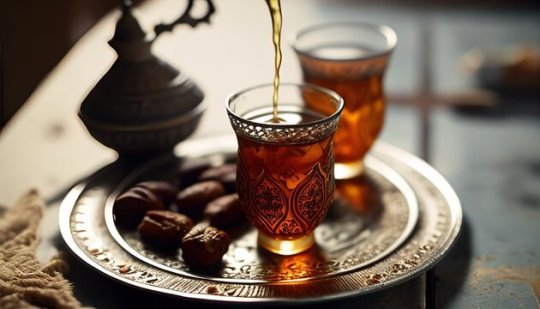
In Sunagakure, they go hard on sweets. Especially dates since the are the only producer of them. They have countless of pastries, candies and date-bases recipes because it was once use as a method of survival in the long windy season in the desert or to have the sugar necessary to be transformed in a energy source to endure long trip in the desert. They are a national pride since most nuts in the ninja world grows in the country of wind; almonds, pistachios, walnuts, etc. they also showcase delicate and unique culinary practices when it comes to pastries who set Suna apart from other nations. It is the only place to find citrus, olive & argan trees used to make oils mostly made for exportation & their lucrative citrus production industry.
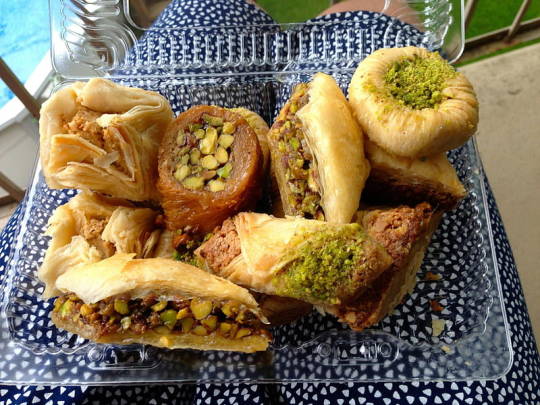
Their eating style is different since it is not uncommon to eat with your hands. For a long time, families were large so the habit of having a large plate to share with many emerge from that condition
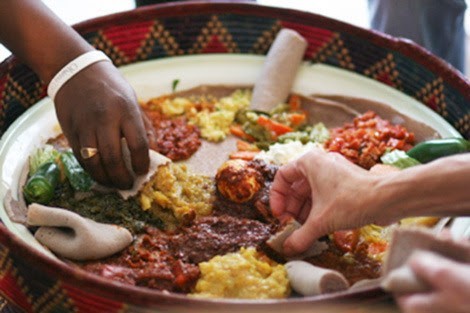
Due to frequent drought, the country of wind has specialized themselves in the production of survival crops like grains like millet, sorghum & wheat who are also a staple in the cuisine of Suna. they most of the time milled to make flour to produce various types of bread crepe and flat breads (also see as more convenient since they don’t require yeast to be cooked). Alongside that, the consumption of legumes like lentils and different kinds of beans is the main source of protein and prized as all around superfood. They are cooked in paste and stew often eaten with bread.
Staple/Classic Suna Meal=Large plate of various pastes/creamy sauces made of beans & lentils, grilled eggplant, hummus, flat bread, millet crepe, spinach, citrus tea,
Kirigakure (Country of Water) The main meal is Kiri is grilled fish.
Unfortunately, Kirigakure has the reputation of eating ANYTHING that swims, crawls, run or fly in the ocean. First and firmly base on their location and how the practice of fishing is part of so many residents lives.

Also, it comes from the lack of access to goods from importation of other nations. For very long time, Kiri and the surrounded regions were left on their own when a bad harvest happened, or if the climate hindered the quantity of fish collected. In those cases, the villager learned to make anything of every single thing they found (in the ocean). Due to their different economical system (mostly based on exchange of goods), it took a long time for Kiri to join the market of importation and exportation. Now they are the main exporter of seafood of various types and fish (a staple in their diet). The land of fire became the main consumers of seafood above the country of water itself. The never-ending high demand for sea product (including fish) has opened the door for illegal activity to create non-approved fish farms and illegal fishing. The country of wind is guilty, while having no access to water yet desiring sea products (which is recent because they try to follow after the country of fire and the whole globalization narrative).The Country of Fire being the biggest culprit due to their insatiable desire to reach all and taste all (even without permission).
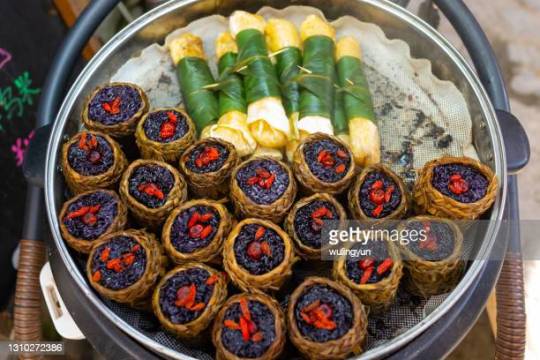
Their known cultural theft has implication in the problem since a traditional dish named サメの目 (Same no Me written Samenome meaning Shark Eyes) which consist of thin layers of fish rolled and stuffed with black wild rice and bitter herbs (it is name like this since it resemble the pupils of sharks) was ‘’discovered’’ by ninja scientist from Konohagakure during early invasion of the country of water by various bigger nations for natural resources in this case being clay who was abundant along any body of water (used to make pots and tolls before the emergence of various metals) also to take control and harvest the almost infinite amount of fresh water. The devastation of natural habitat and the disruption of the ecosystem cause a destruction that couldn’t be healed instead it changed the nature of the environment. Since then, most bodies of water in the land of water turned into seawater, the once flourishing pastures of green leafy galore died and the remaining surviving plants gave birth to what we know today as bitter herbs (ex: dandelion, wormwood, chamomille, peppermint, etc) and they are a staeple in the cuisine of Kiri, for some their main intake of green plants. They are also valued for their medicinal values (you know them plants Haku was collecting in the woods)
Learn more about bitter herbs here: https://dirthappy.com/bitter-herbs/
(Going back to what we were talking about)The discovery of Samenome was then taken back to the country of fire and after being merged and modified with the local crops and different culinary practices became what we know today as sushi; the captain of Konoha’s cuisine along side with Ramen. The seaweed paper also originally comes from Kiri, they were not used as food but fertilizers for growing crops. The practice of harvesting seaweed became popular in the southern part of the country of fire after the nori seaweed was discovered in its waters. Meanwhile they still import wakame from the country of water since it’s a staple for various soups and side dishes.
In The Country of Water, they consumed more the wild varieties of different crops like wild black rice, quinoa & amaranth as a main source of carbs.
In Kiri, they seasoned everything with pepper, everything; rice, bitter herbs, fish & seafood, grains. Some regions of the country of water house the spiciest pepper you can find in the warm months of the summer and the most frost resistant cabbages during the cold months. Now, they import a lot of pepper product from The country of lightning during the most of the year. Most of the seasoning is onion-based but the access to salt from the waters allowed the spectrum of seasoning to widen but also utilize is in order to ferment or pickle foods for the winter making pickled goods a staple in the cuisine of Kiri even for pickled fish.
Staple/Classic Kiri meal= Grilled fish, Samenome, spicy pickled cabbage, amaranth crepe of fritters, bitter herbs, pepper sauce
Kumogakure (Country of Lightning) The cuisine of Kumogakure is different than typical meals you would find in other nations. Like Suna the uniqueness reveals itself in their cuisine since its most popular dishes are made of ingredients that can only be found in the country of lightning. Cuisine of Kumogakure follows various principals making their reputation.
Beef is a luxury food. Due to its location, residents of the country of lightning were consuming other animals like sheep and goat who are abundant in rocky areas. The first wild buffalos were in fact imported from neighbor countries and are domesticated for food in small quantities because most green pasture (outside of main cities) are already occupied by sheeps. Many attempts were made to grow the bovine population but failed due to competition for food and access to grass.
Meat is more regarded as side dishes since their protein source mostly come from green vegetable and beans. Like in Suna, where legumes are praised for their high nutritional value but in the country of wind they eat lentils & chickpeas, meanwhile in Kumo they are eating kidney beans, black eyes peas and their infamous black beans. Each nation has a particular legume/bean/pulse they cherish in their cuisine. The Country of fire is house to all types of sprouts like of mung bean and edamame/soy beans. Interestingly, the practice of making tofu comes from Amegakure and has spread to neighboring nations. In Kiri, they eat beans in their original form, simple steamed and sometimes raw so they prefer yardlong beans and peas of different kinds.
· The land of lightning is famous for their abundance of herbs & spice. Hence why they weren’t as enthusiast to rush into meat consumption since they can make many vegetables taste amazing by seasoning it right. Plants like ginger, turmeric, various varieties of peppers, allspice, paprika, star anise & parsley are native to the area. the exception is garlic since it can be found abundantly across the ninja world.
· The cuisine of Kumo could be defined as quick and simple. Hence why they are numerous meals in bites sizes like fried dough (a popular street food), samoussa, meat/bean patties, dried sweet potatoes chips (chouji’s favorite). Unfortunately, frying/pan-frying is a prominent method of cooking so to balance the diet the preparation of vegetables filled stews and soups comes in the picture and they don’t eat foods like white rice. First, because it does not grow in the region at all, instead it’s the rare place where eating brown rice is thing and meals like fermented pureed yam are often use as a substitute for rice along many sauces and stews (after white rice became popular across the ninja world.). In Suna, they sticked to basmati rice and Kiri to black rice but white rice & sweet rice (hybridized in the country of fire) has always been one of the first food to be distributed is smaller nations in food crisis and for daily consumption because of how easily it is to massively produce and for their poorer nutritional value.
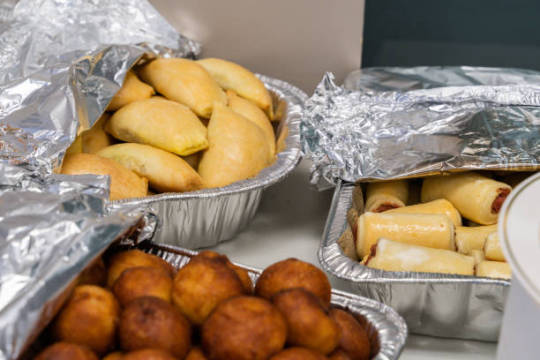
(ex: meat/beans patties, sweet potatoes chips, deep fried dough (bottom pic above) called ふわふわ/Fuwa Fuwa meaning Fluffy since the yeast used to make them creates a treat light and airy/fluffy like clouds & samoussa)
· SAUCE, SAUCE, SAUCE. Again, we said people from the Cloud love when it’s simple (hence why many dishes from Konoha like Takoyaki seems like an equation of calculus to them but those who could taste it enjoyed it actually). Its ‘’we dump all in the pot and let it cook’’ cooking style. If your meal doesn’t have a sauce of any kind, its not from Kumo. Many of them contained some form of peanut butter (a national pride food). The country of lightning is the biggest producer of peanuts and use it in various dishes

(exemples: peanut soup, fermented cassava pulp, cassava leave sauce, callaloo/amaranth soup, spinach peanut butter sauce )
· Did you know that Kumo’s peanut brittle’s distant cousin is the Nougat from Suna? It’s the Raikage’s favorite snack. Like the menu of the wedding feature the country most prized, popular, and fancy meals, most of them are the raikage’s favorites.

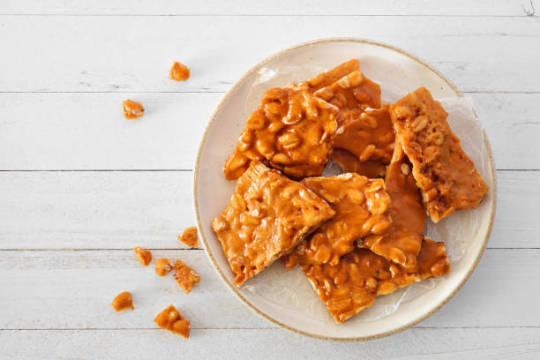
(from left to right, Nougat (from Suna) & Peanut Brittle also called 稲妻バー/Inazuma bars meaning Lightning Bars) because when you prepare them it is tradition to punch the plate in the middle to break it into smaller portions, it looks like the food got hit by lightning.
Many exotic tropical grows outside of big cities like mangos, pineapples & papayas making fruit the main sugar intake in the Kumo diet.
#naruto modern au#naruto#boruto#naruto headcanons#naruto imagines#boruto naruto next generations#boruto headcanons#boruto imagines#headcanons#naruto shippuden#naruto au#naruto uzumaki#haku yuki#zabuza momochi#choji akimichi#karui akimichi#chocho akimichi#konoha#konohagakure#sunagakure#KIRIGAKURE#kirigakure#kumo#kumogakure#killer bee#anime food#food#sasuke uchiha#headcanon#imagines
152 notes
·
View notes
Photo

Rationing in Wartime Britain
Rationing of food, clothing, petrol, and other essential items was introduced in Britain during the Second World War (1939-45) when the country's imports were severely threatened by German U-boat attacks on merchant shipping in the Atlantic Ocean, North Sea, and English Channel. Citizens were issued with ration books of coupons which they could spend at retailers to ensure that everyone had access to a minimum of essentials but nobody could buy in excess of restricted amounts.
While some staples like bread, fruit, and vegetables were never rationed, plenty of other necessities were so that meals became simpler and more monotonous. Rationed items included meat, sugar, butter, cheese, tea, and soap. The government also encouraged people to use cheap restaurants by exempting them and their customers from any rationing. Although a black market developed where people illegally bought goods that were otherwise rationed, the ration system worked largely thanks to everyone's self-regulation.
Short Supplies
Pre-war Britain was heavily dependent on many imported goods, which came by ship from around the British Empire, North and South America, and other trading nations. Now during the war, merchant shipping came under serious threat from German U-boats as they headed to and from Britain. Another threat to supplies came from the German bombing of major British ports and the East End docks in London. With Western and Central Europe occupied by the enemy, Britain's access to goods produced there was cut off. In 1941, Britain's exports were two-thirds lower than before the war. Another blow to supplies came when Japan occupied parts of the British Empire in the East from 1942. In addition to these limits, the government's approach to total war meant that many resources had to be diverted to the war effort such as weapons manufacturing and transportation, further limiting resources that might otherwise have been used to support the market for domestic goods.
In order to ensure certain essential items remained available to the widest number of citizens, rationing was introduced, a policy that had been used in the First World War (1914-18). Food prices were controlled from November 1939. Petrol was rationed from September 1939. From the first months of 1940, meat, butter, and sugar were rationed. From June 1941, clothes were rationed in response to a dramatic rise in prices. Soap was rationed from February 1942 and became one of the most popular presents for Christmas that year.
There "is ample evidence that such controls, to help win the war, were not resented" (Dear, 882), and there was the benefit that people felt rationing, applied to everyone, was helping make British society less unequal as everyone pulled together in times of trouble.
Continue reading...
36 notes
·
View notes
Text
Kirigakure Worldbuilding II - Specialties
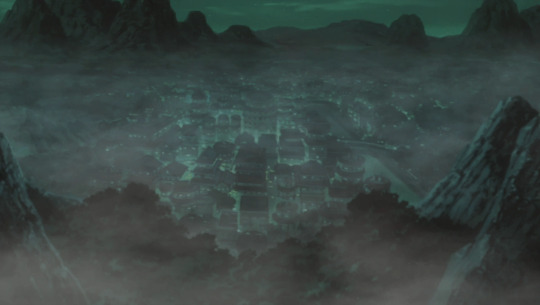
Inspired by a recent conversation I had with @pxssy-stuntin-for-itxchi, I got wanted to add more to my Kirigakure worldbuiling post!
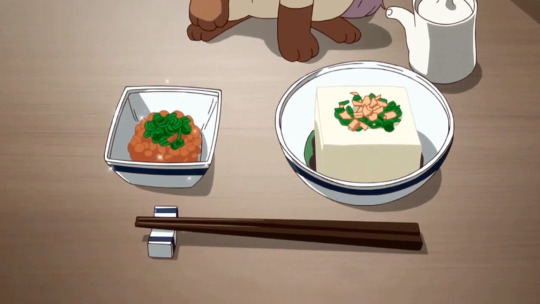
Food Preservation Since except for a month during the winter, it never really gets cold in Kirigakure. This has lead to its citizens becoming very creative at enhancing the shelf life of the food that they have. Meat/fish is dry-aged and smoked, fruits are turned into preserve, cheong, or slow-dried. Dairy is a luxury in the water realm, so there are a lot of plant based dairy alternatives already, so it’s no surprise the wave realm has a quite big vegetarian and vegan population. Even though their spice tolerance is not the highest, when talking SALT tolerance, no village can beat Kiri. They are VERY generous with salting their food. In order to get a smokey flavor to any dish, you can obtain smoked salt everywhere in the country. The water realm was the first region the come up with the concept of fermentation of food. Milk is turned into yoghurt and cabbage is turned into kimchi and its more popular variant - sauerkraut. Fun fact: Suigetsu comes from a high ranking caste, so he actually was able to afford dairy yoghurt and jello with actual gelatine, and they're his favorite foods.
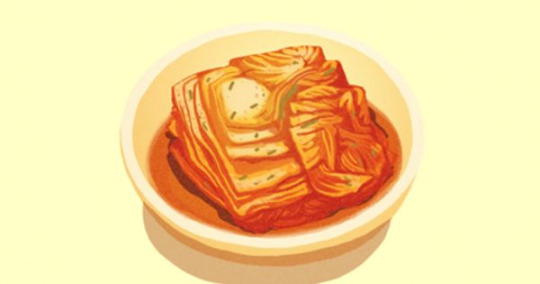
Kimchi and Sauerkraut
The general spice tolerance of Kiri citizens is not the highest across the shinobi world, so kimchi is mostly exported to Konoha and Suna. The cabbage grown in the water realm is specifically bred to be extra heat resistant and crunchy. In order to cut down on waste, the excess is turned into sauerkraut juice. To put less of a strain on the public healthcare system, the water realm government has issued its citizens to exercise and eat healthy – especially children. To get more children to drink sauerkraut juice, it is produced in portable, biodegradable little juice boxes which are handed out for free in the Kirigakure academy. Every Kiri genin has tasted it atleast once. Scurvy was once a big problem for most shinobi going on long term stealth missionas, since most just lived off dried meat and crackers, except for Kiri Nin, since they always carry sauerkraut juice (and kumquats) with them.
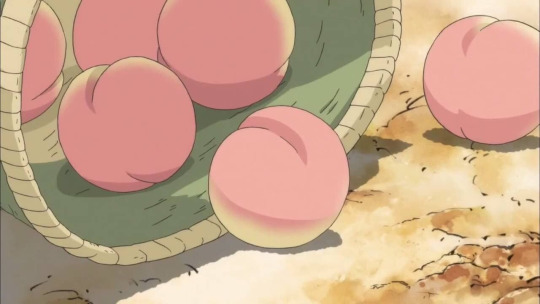
Fruit
Mangos: With their sweet and fruity taste, they’re popular amongst children, especially when dried, rolled into balls with an added sugar crust. While other countries see them as a special treat they’re a staple in Kiri. Papaya: Another Kiri staple. It is eaten either as a fruit in its orange form or in its green form in more hearty dishes. The seeds are ground and sold as a pepper alternative. Its extracts of the are used by the Kiri beauty industry, which is the biggest one, closely followed by Suna's beauty industry. Peaches: Often grown on the mountaintops of the water realm, they’re loved all over the country. Peach trees are seen as a sign of fertility, renewal and good luck. The pits are turned into persipan, which many foreigners don't like. Durian: Those stinky fruit are banned in Kiri’s public spaces. However, it is still the most popular fruit overall, so only a few get exported yearly, much to the other countries' durian lovers' chagrin. Jackfruit: Not a lot of Kiri citizens like its fleshy texture but it is often used as meat alternative by Kiri’s large plant-based population. Lychee: They’re often sugared and canned, or added to jelly. They're amongst the most popular fruit to make cheong with.
Kumquat: Kiri nin love them because they’re basically easily portable, vitamin c filled snacks. Other honorable mentions include: Rambutan, Mangosteen, Starfruit, Cherimoya, Soursop, Yuzu and Tamarillo.

Jelly If you’ve read my last post on Kiri specialties, you probably know that instead of manufactured candy, Sweet tooths (teeth?) in Kiri chomp down on dried fruit, fermented sugary sticky rice and – jelly. Gelatine, like most non fish animal products, is a luxury so most jellies are made with agar-agar, a plant based “gelatine”. Just take some fruit juice and set it with agar – and there you have jelly. Most foreigners find Kiri’s obsession with jelly pudding off-putting, but that doesn’t stop them. Fun fact: Suigetsu comes from a high ranking caste, so he actually was able to afford dairy yoghurt and jello with actual gelatine, and they're his favorite foods. Non food fun fact: As genetic engineering gets more advanced and Kirigakure already having no issues using bacteria, they're also the biggest exporter of nutrient agar for agar plates which are used for the cultivation of bacteria and funghi. Kigakure is the leading village when it comes to biological and medical advancements, which is why Orochimaru has visited very often (and eventually ran into Kimimaro)

#naruto headcanons#naruto shippuden#naruto#naruto imagines#naruto scenarios#akatsuki#naruto fanfiction#headcanons#fanfiction#suigetsu headcanons#suigetsu#naruto meta#kirigakure headcanon#kisame headcanons#kisame hoshigaki#kimimaro#orochimaru#zabuza momochi
103 notes
·
View notes
Text

Argentina Scrapped Its Rent Controls. Now the Market Is Thriving.
BUENOS AIRES—For years, Argentina imposed one of the world’s strictest rent-control laws. It was meant to keep homes such as the stately belle epoque apartments of Buenos Aires affordable, but instead, officials here say, rents soared.
Now, the country’s new president, Javier Milei, has scrapped the rental law, along with most government price controls, in a fiscal experiment that he is conducting to revive South America’s second-biggest economy.
The result: The Argentine capital is undergoing a rental-market boom. Landlords are rushing to put their properties back on the market, with Buenos Aires rental supplies increasing by over 170%. While rents are still up in nominal terms, many renters are getting better deals than ever, with a 40% decline in the real price of rental properties when adjusted for inflation since last October, said Federico González Rouco, an economist at Buenos Aires-based Empiria Consultores.
Milei’s move to undo rent-control regulations has resulted in one of the clearest-cut victories for what he calls “economic shock therapy.” He is methodically taking apart a system of price controls, closing government agencies and lifting trade restrictions built up over eight decades of socialist and military rule in an effort that has upended the lives of many Argentines.
In Buenos Aires—a city dubbed the Paris of the South for its broad avenues and cafe culture—many apartments long sat empty, with landlords preferring to keep them vacant, or lease them as vacation rentals, rather than comply with the government’s rent law.
In 2022, there were some 200,000 empty properties in Buenos Aires, up 45% from 2018, according to a report by Cedesu, a Buenos Aires-based policy group that focuses on urban development. Finding an affordable apartment under the rent-control law was difficult.
Aldana Oliver spent about 18 months looking for a place to rent when she left home for the city of La Plata to study dentistry.
“There were few places to rent and those available were very expensive,” said Oliver. After rent control was scrapped, she quickly found a studio apartment for about $200 a month. “I found something really nice. And I got a good price,” she said.
Many new contracts—now permitted in dollars as well as pesos—stipulate rent increases every three months, real-estate agents and tenants say. That has made housing costs unaffordable for some people already struggling to pay higher food and utility prices, said Gervasio Muñoz, who represents an association of tenants in Buenos Aires.
Romina Misenta, a 40-year-old teacher, said rent on her small apartment increased almost threefold when her previous contract ended.
“My situation has worsened a lot,” she said. “I would be paying a lot less in rent if the previous law was still in effect.”
Still, rental prices appear to be stabilizing. Monthly price increases are now at their lowest rate since 2021 as more apartments become available, according to Zonaprop, Argentina’s largest real-estate website.
The Milei administration has also scrapped price controls on staples such as milk and sugar. The president lifted controls on cooking gas, removed export controls on beef and cut government requirements to import steel, hoping to ease construction costs.
And he ditched the restrictions he said made renting an apartment an odyssey that hurt those it was trying to help.
Critics of Milei say he is deepening the economic pain of the working class. And while he remains popular, some polls show his support eroding. In August, he had a 45% approval rating, down from nearly 60% earlier this year, according to pollster Giacobbe Consultores.
“By freeing up prices, it’s very difficult for all these people, including us, to get to the end of the month,” said Amalia Roggero, whose soup kitchen in La Plata has experienced a surge in people seeking food.
Milei, a libertarian economist, long warned Argentines that his free-market changes would initially make conditions worse before they got better as he slashed public spending to tame inflation. He said it was necessary to unravel tight economic controls he inherited from the previous, left-wing Peronist government, which implemented price controls on some 50,000 products from food to clothing as part of its Fair Prices program.
Milei says his measures are delivering results. He is projecting annual inflation of 18% next year, down from the current 237%, one of the world’s highest rates, as he works to tame the never-ending fiscal deficits at the root of Argentina’s decadeslong economic turmoil.
But the government still faces substantial challenges. Bringing inflation down even further after being stuck at roughly 4% a month in recent months will be difficult, with little room for more spending cuts amid demands to restart public works and increase pensions and wages, economists say.
“They inherited a disastrous economic situation, and getting out of this mess will take time,” said Alberto Cavallo, a professor at Harvard Business School who has studied Argentina’s price controls.
At least for now, the housing market is thriving. Opponents of price controls say Argentina is a cautionary lesson for officials from the U.S. to Europe who have looked to curb surging housing costs with rent controls.
President Biden recently called for some rent increases to be capped at 5% annually. And Vice President Kamala Harris said that if elected president she “will take on corporate landlords and cap unfair rent increases.”
González Rouco, the economist, warned against such plans. “With good intentions or a law,” he said, “you can’t modify how markets work. They have their own dynamic.”
In Argentina, the national rental law approved in 2020 during the left-wing government of President Alberto Fernández required a minimum three-year contract. The rents had to be paid in pesos, the country’s volatile currency, which lost about 90% of its value against the dollar on the black market during Fernández’s 2019-to-2023 term. Rental prices could be increased annually but at a rate set by the central bank, which took into account inflation and worker salaries.
With Argentina’s history of high and volatile inflation, property owners took steps to protect themselves from inflation that would quickly eat into the rents if they were forced to wait 12 months before raising prices.
They instead jacked up the starting price for new leases, making it far too expensive for many people to sign a new contract. That resulted in the average rent for a two-bedroom apartment in Buenos Aires costing 27 times the price of 2019, according to Zonaprop.
Some landlords tried to sell. Others listed them on short-term rental sites such as Airbnb, where tourists paid in dollars. Landlords also focused on renting to people within their social circle, resulting in a big black market with informal rental deals that skirted government rules, economists say. Many apartment owners simply mothballed their properties.
“You’d never see rental signs in windows,” said Mariano García Malbrán, the president of the chamber of real-estate companies, describing how rent controls led to shortages. “And properties that were listed with real-estate companies would be gone in a day or two.”
19 notes
·
View notes
Text

Sir James Walker
Director of his family firm Walker’s Shortbread who turned a simple product into an international brand
Jim Walker, who has died at the age of 80, was one of the UK’s master exporters, turning a simple product into an international brand. The ubiquity of Walker’s Shortbread in the world’s airports and delis has made it a leading brand of the food and drink industry and an exemplar as to how a family business can expand and still retain its independence.
Sir Walker himself was an understated and charming man who led the firm’s growth from its place of origin – the village of Aberlour, Moray, with a population of barely 1,000, tucked away on Speyside in the north-east of Scotland. Between its sites in Aberlour and Elgin, 12 miles away, it grew under his leadership to employ 1,500 people, with a turnover in 2023 of £184m.
In 1898, Sir Walker’s grandfather, Joseph, an Aberdeenshire farmer, moved to Aberlour, took over the village bakery and developed the original shortbread recipe from which the company has never deviated. Jim and his siblings grew up above the shop in the village’s main street.
To this day, every new Walker’s product is market-tested through the original shop before being offered to consumers worldwide.

In the 1960s, the Walker’s business began to spread its wings, having acquired the reputation of making the finest shortbread in Scotland. Jim’s elder brother Joe became the master baker, and their sister, Marjorie, looked after the commercial side as company secretary, while Jim worked to push the brand into large-scale outlets at home and abroad, now selling in more than 100 countries.
When Walker’s became a limited company in 1980, the siblings were the three founding directors. Joe died in 2021 and Marjorie in 2023. For many years, Jim and Joe were the joint managing directors, with the younger brother’s focus firmly on brand promotion and market expansion. While the range of products expanded, shortbread continued to be the staple with which the Walker’s brand was most strongly identified.
Sir Walker said a few years ago: “It’s down to integrity and doing a simple thing well.” Shortbread, he pointed out, contains only four ingredients – flour, butter, salt and sugar.
Perfection lay in maintaining the product’s consistency on an industrial scale, as the business expanded and large bakeries were built in Aberlour and Elgin.
Proud of his brand’s distinctive tartan packaging, Sir Walker also warned: “You can’t slap a bit of tartan on it and expect it to sell, as some people think. It’s the quality of what’s inside that matters.” While big companies produce shortbread as part of huge product ranges, he insisted: “We think about shortbread seven days a week.” Innumerable approaches from the industry’s giants were quietly rebuffed and Walker’s remain the UK’s biggest independent biscuit maker.
The key to their exporting success, he believed, lay in finding a good distributor, usually on an exclusive basis, in each territory. He relied heavily on trust-based personal relationships that often lasted for decades. Until recently, when he stepped back from the front line to take on an ambassadorial and advisory role, he travelled extensively to trade shows and had “not missed a day” at the big ISM sweets and confectionery trade fair in Cologne since 1978.
Educated at Aberlour primary school and Robert Gordon’s college in Aberdeen, he joined his parents, Williamina and James, in the business straight from school, when it had a workforce of 16 and turnover of £40,000. In 1962, he became an executive director and never worked for anyone other than the family business. In 2004, Aberlour House, formerly a prep school for Gordonstoun, was taken over and renovated to become Sir Walker’s office and host international customers in suitably A-listed headquarters.
Sir Walker was hugely respected in his home region of Speyside, not only as an inter-generational employer on a vast scale for a rural community, but also as an ambassador for its wider reputation as an centre of quality Scottish products – food, whisky and textiles.
He served as deputy lord lieutenant of Banffshire (1998-2019) and in 1999 was appointed CBE.
Respected by successive governments as a champion of export promotion and willing adviser to other businesses going down the same route, he was knighted in Queen Elizabeth II’s last birthday honours list, in 2022.
Walker’s had been granted royal warrants for the supply of oatcakes to the Queen in 2001 and shortbread in 2017.
The business has now passed into the hands of the fourth Walker generation with Nicky, son of Joe and nephew of Jim, as managing director, and other family members on the board.
In 1979 Sir Walker married Jennifer Poushinsky. She survives him, along with four children, Jacqui, Jamie, Bryony, and Alastair, and six grandchildren.
🔔 James Nicol Walker, food manufacturer and exporter, born June 13 1944; died 15 December 2024
Daily inspiration. Discover more photos at Just for Books…?
6 notes
·
View notes
Text

Upʼeri
Elven country where they all live in tree cities and towns. Colleges specializing in oil and acrylic paintings, pointillism drawings and paintings, ceramics, acting, singing, theater, metal work, sculpture, and watercolor. Exports are pottery, metal art, magical items such as bags of holding and handy haversacks, pistols, rifles, seasoning and herbs, Hapumeb’unekʼu known as the "100 Herb City". Other exports include red and white wines, especially Elven Wheat, Honeywine, Figdale Red, and Rosewood Vintage.

range hikokade: Oysters eaten with gray walnuts, a delicacy
kija yuli: Muffins that melt like butter, yet fizzle and pop in your mouth, a common breakfast food
nenga kau: Plums roasted and drizzled with honey
bid’i jupiga: Round, gold pastries that are topped with a maple cream
netha ata: Pineapple, papaya, and mango sliced into cubes and dyed white and tossed in sugar
kala yemi: Cashews roasted with orange slices, eaten during winter time
7 notes
·
View notes
Text
can't be the only aussie that fucking despises seeing my country's native animals (especially birds) being kept as pets right? like i feel that most people in my general area hate that shit but idk about city fellas. like especially if the pet (sugar glider, parrot, emu, etc.) is like, in a place like america where their laws there for owning animals are shit as. like. maybe YOU can own a fucking emu in america easy peasy lemon squeezy but in australia you 1. have to have a very good fucking reason for it and 2. a fucking permit to own the animal. and most of those reasons and permits come down to emu farms that farm the meat, feathers, eggs etc. like in australia you can't own native animals without permits and with some native animals you're only allowed to have temporary guardianship over them because you're a wildlife rehabber, and afterwards they MUST be released into the wild. like here in australia we take care of our wildlife and take that shit very seriously which is why exporting native animals and importing invasive animals is severely restricted, with exceptions for like, zoos and research and shit. we're so anal about everything regarding the health and wellbeing of our native animals that we don't even HAVE rabies in australia, which is honestly a huge fucking accomplishment. like THAT is how seriously we take the health and wellbeing of our native animals.
so if anyone HAS a native australian animal as a pet outside of australia i generally side eye the fuck out of them because. how'd you get it cunt? from where, and from whom, and how long ago, and at some point was an animal smuggled out of australia for a person's enjoyment, whether it was the parents, grandparents etc.? do you know the answers to any of those questions at all? do you understand that the animal you have as a pet is more than likely endangered here in australia, especially after the 2020 fires which caused so many animals to die, go extinct, and become endangered pretty much within the span of just a few months? like idk about ppl in other countries and their opinion or whatever but as an aussie that shit boils my blood like nothing else and i know i'm not the only aussie who feels that way, and wish more people realised how fucked the whole situation actually was and would stop caving to sensitive american's feelings about the subject. like yeah. i think if you own a native australian animal in america or any other country, that somewhere down the line something wrong happened. because at least here in australia, there are permits and licences and generally good reasons for said animals being in captivity, and some animals are just straight up prohibited from ever being owned in any way, such as kangaroos and sugar gliders (unless they're in a zoo). but in other countries it's the fuccking wild west and you can do whatever you want. and idk how to tell you this but. that's not a good thing at all.
100 notes
·
View notes
Text
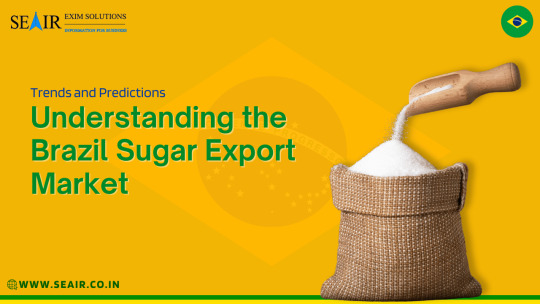
Brazil leads global sugar production, supplying around 80% of the world's sugar from sugarcane. In 2022, production rose 3.4% to 36.3 million metric tons. Let's explore industry trends, forecasts, export data, and key players in Brazil's sugar export industry.
Visit: https://www.seair.co.in/blog/brazil-sugar-export.aspx
#export#import#trade data#import data#export data#international trade#global trade data#trade market#import export data#Brazil sugar export#sugar exporters in brazil#sugar hs code#brazil sugar export data#brazilian sugar suppliers in brazil#sugar exporting countries#brazilian sugar exporters#brazil#sugar#sugar exports from brazil#biggest exporter of sugar#brazil export data
0 notes
Text
https://www.seair.co.in/blog/sugar-export-data.aspx

Explore the global sugar export landscape with Seair Exim Solutions. Gain valuable insights into the latest trends, challenges, and opportunities in the world sugar market. Stay informed and make informed decisions for your business growth. Discover export possibilities and strategic insights in our comprehensive blog on the world sugar trade.
#Top 10 sugar exporters in India#World largest exporter of sugar#Sugar#Export Data by Country#Sugar export Data 2022–23#Sugar export from India#sugar hs code#search hs code
1 note
·
View note
Note
I suddenly remembered that one line from Desmond as Al Mualims daughter ask where Desmond was craving a cheese burger and Al Mualim sent Assassins to find it and it got me thinking so I searched up if it was possible but all I got were from the middle ages so I wanna know your take if a cheese burger can be made during that time
The Desmond is reborn as Al Mualim’s daughter post, the “I misunderstood the ask so now Al Mualim has a wife oops” follow up idea and its sequel, the “Eli POV”, for those curious.
Okay, so there’s a lot of variations of the cheeseburger. For the sake of analyzing if it’s possible to recreate a cheeseburger in 12th century Levant, let’s go for the ‘basics’:
Bun
Cheese that can be melted
Patty (ground beef)
Lettuce
Tomato
Onion
Pickles
Sauce
Let’s start with the parts that needs to be 'prepared':
Buns can easily be recreated with flour, yeast, milk, egg, sugar, salt and butter or oil. Sesame seed that will sprinkled on top is optional but can be gotten in Egypt since they seemed to have it during Ptolemaic period as ‘sesemt’.
Patty can be prepared using ground beef (I’m sure Al Mualim would have no problem getting novices/recruits to chop the beef enough for it to be grounded, good luck, you poor boys), salt, ground black pepper, egg and dry bread crumbs. The lost ancient port city of Muziris is said to have exported black pepper to Levant.
Salt for both the buns and patty is possible to get during that time as well. It’s gonna be expensive though XD
Now, for the other ingredients:
Lettuce – it’s originally farmed in ancient Egyptians so they can find this easily.
An onion variation/ancestor has been noted in Iran so they can contact Alamut for this.
Cucumber for the pickles is available in India and other East Asian countries so their best bet would be the Silk Road. Pickling would need vinegar which should be available already by that time (vinegar has been available since alcohol brewing has been a thing… maybe…) (this needs salt as well)
Tomato – They’d need to sail to America for this one. Time to get into contact with Ratonhnhaké:ton’s tribe, I guess. XD
The sauce though is a bit complicated. Cheeseburger usually use thousand island for the sauce but that would mean ketchup and mayonnaise. Ketchup needs tomato as well so… yeah. (of course, the sauce can be something else but then… it won’t be a classic cheeseburger if it’s not at least mayonnaise and homemade mayonnaise is… uuuhh… good luck, novices and recruits)
Now… the cheese…
American cheese is… well… sorta maybe impossible? XD
It would be too much to try and create even a Swiss or Cheddar cheese for this one so what will make or break this cheeseburger endeavor will be the cheese.
It needs to be a type of cheese that can be melted…
Or…
Well…
They do have the Apple so they can cheat it to learn how to make that kind of cheese themselves XD
(all information taken from wikipedia)
#i never knew i would research if it’s possible to make a cheeseburger#in 12th century levant#when i made this tumblr XD#it was fun though#researching is fun for me hahahaha#the black pepper part i already researched before#for eagle of alamut#ask and answer#no usual tags because#the og ask was#altdes
24 notes
·
View notes
Text
Global Food Prices Risk Spiking on Worst-Ever Drought in Brazil
Long periods without rainfall are becoming the norm — and the world’s bread basket is a microcosm of how climate change is turning lives and whole economies upside down.

For six months, not a drop of rain fell on José Orlando Cintra Filho’s coffee crops.
The white flowers that typically inspire hope of a good arabica harvest — the bean variety favored by chains including Starbucks Corp. — still haven’t blossomed. Instead, the trees withered. Cintra Filho, knowing he didn’t have enough water in his reservoirs, stopped irrigating his farms and trimmed some branches earlier than usual. Next year’s harvest is already shrinking.
“I’ve been in coffee for 36 years and I have never been through this,” he said, hectares of parched trees surrounding him in a major coffee producing area known as Mogiana Paulista.
The worst drought in Brazil’s history is doing more than jeopardizing coffee, sugar and soybean crops. Dead vegetation is giving way to fires, sending greenhouse gases into the atmosphere and disappearing more of the Amazon rainforest. Key rivers, responsible for transporting a third of the nation’s prized soy crop, are drying out. Utility costs are up given that the country gets two-thirds of its energy from hydropower.
And as one the world’s largest crop exporters, any trouble in Brazil’s agriculture business has knock-on effects for food prices around the world.
Continue reading.
#brazil#brazilian politics#politics#environmental justice#economy#environmentalism#climate change#farming#image description in alt#mod nise da silveira
9 notes
·
View notes